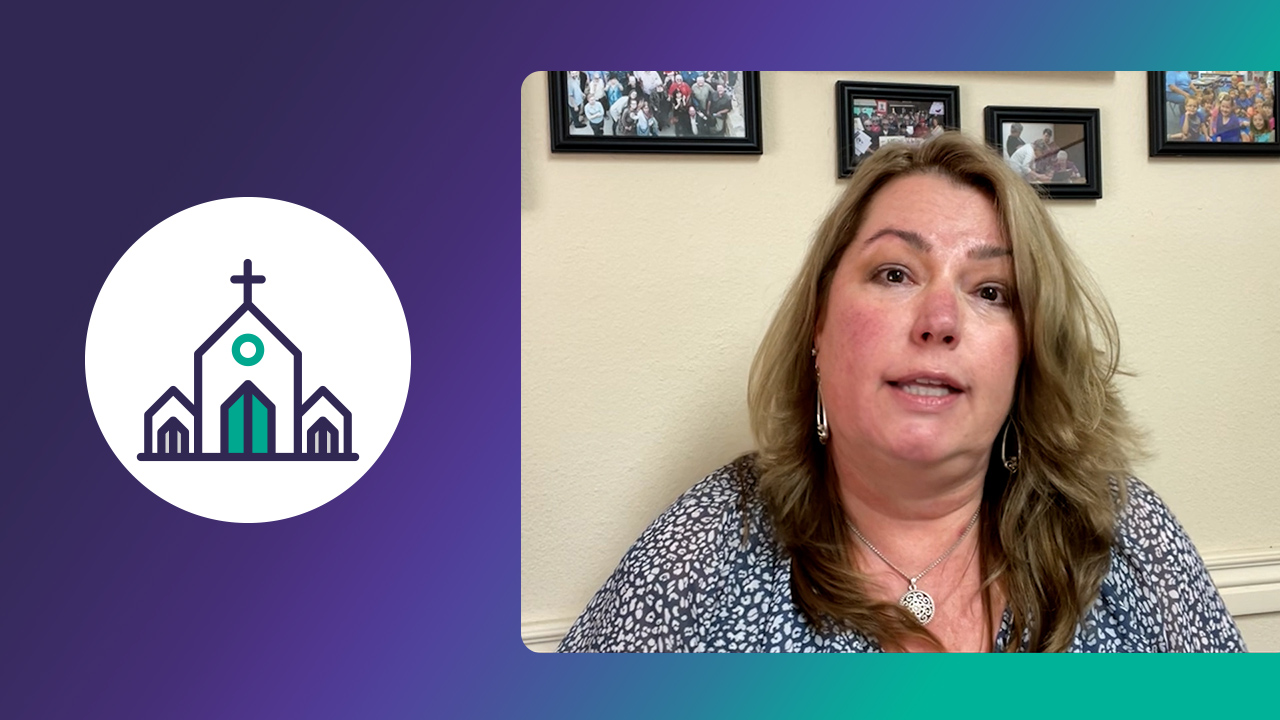
Financial stewardship is about handling your church’s resources with care, integrity and a clear sense of purpose. It’s ensuring every donation and every dollar is used wisely to support your mission. You’re not just managing money; you’re building trust, ensuring sustainability and honoring your congregation's generosity.
Churches receive about $74.5 billion in donations each year. That’s a lot of faith in action and a lot of responsibility. Today’s donors expect transparency in church finances and rightfully so. Strong financial accountability keeps your church running smoothly and your community engaged for the long haul.
Table of Contents
What Is Church Financial Stewardship?
Common Financial Challenges Churches Face
Best Practices for Financial Stewardship
Using Technology to Enhance Church Stewardship
How Vanco Supports Church Financial Stewardship
FAQs (Frequently Asked Questions)
What Is Church Financial Stewardship?

Money can be a tricky topic in churches. No one wants to feel like their faith is reduced to a budget line item. That’s why it’s important to remember that church financial stewardship isn’t about money for money’s sake.
It’s about honoring people's trust in their church when they give and using resources wisely so the church can serve, grow and stay financially healthy.
Financial stewardship means handling church funds with care, accountability and purpose. Every dollar that comes in, whether through tithes, offerings or special gifts, carries a responsibility.
That responsibility includes making ethical financial decisions, planning for the future and ensuring that money supports the ministry rather than just keeping the lights on. It’s about sustainability, not just survival.
Biblical Foundation of Stewardship
Stewardship isn’t just a practical necessity; it’s a biblical principle. The Bible has more than 2,000 verses about money and possessions. Why? Because God knows how much finances impact our daily lives.
In Psalm 24:1, we’re reminded that everything belongs to Him. Our job isn’t to accumulate wealth, but to manage what we’re given wisely.
Jesus taught about stewardship often. Sixteen of His 38 parables deal with money. That’s not because he was running a finance class, but because how we handle resources reflects what we value:
- Are we generous?
- Are we responsible?
- Do we prioritize mission over material things?
This biblical stewardship guide is a great resource for a deeper look at what the Bible says about stewardship.
The Role of Transparency and Trust
Every church leader needs to know that assumptions don’t build trust; transparency does.
Donors today don’t just give because they feel obligated. They give when they believe their contributions are being handled with integrity. Skepticism grows when financial decisions are made behind closed doors. When churches openly share their financial health, people feel invested and engaged.
Transparency isn’t about overwhelming members with spreadsheets and financial jargon. It’s about regular updates, clear communication and making financial information accessible. Simple practices like:
- Annual budget meetings
- Published financial reports
- Open Q&A sessions
These practices go a long way in fostering church financial trust.
Churches aren’t immune to financial missteps. Even the most well-intentioned congregations can face financial struggles or even scandals. However, how you deal with it is what matters most.
Common Financial Challenges Churches Face
Churches face some unique challenges compared to other types of organizations, making fiscal faith-based financial management an ongoing process. Within that, there are several common challenges that most, if not all, faith communities experience.
Budgeting constraints
Every church leader has had a moment of staring at a budget and wondering, “How are we going to make this work?” It’s no secret that church budgets can be tight. Many churches operate at a deficit and only a tiny fraction exceed their budgeted giving.
Expenses like staff salaries, facility upkeep and outreach programs increase quickly. Without careful financial planning, it’s easy to find the church struggling to do more with less.
One of the biggest budgeting challenges is balancing the practical with the spiritual. You want to invest in ministry and mission, but you also have operational costs that can’t be ignored.
Cutting back on staff or programs isn’t easy, but neither is stretching finances too thin. It’s a delicate balance that requires thoughtful church financial planning. Churches that navigate this challenge successfully often have church budget planning strategies in place:
- Realistic income projections
- Clear spending priorities
- A commitment to financial transparency
Without these, it’s too easy for financial strain to distract from ministry.
Irregular or seasonal giving
Most churches see a significant spike in giving during the holiday season because people are often more generous when Christmas music plays in the background. Studies show up to a third of a church’s annual donations come between Thanksgiving and New Year’s.
That’s great in December, but what happens in July when giving slows down? This unpredictability makes faith-based financial management difficult. Bills don’t stop just because donations dip in the summer.
Payroll, maintenance and ministry needs are year-round expenses. Yet, for many churches, the financial calendar looks like a roller coaster, with highs at year-end and deep dips in the months after.
To smooth out these fluctuations, churches need to encourage consistent giving. Teaching about generosity, offering automated giving options and maintaining transparency about financial needs can help stabilize cash flow. After all, the ministry doesn’t take a break in the slow months, so giving shouldn’t either.
Lack of financial planning systems
A surprising number of churches don’t have formal financial planning systems. Some don’t create an annual budget and others have never conducted a financial audit. For many, church moneybe management is handled reactively rather than proactively.
Without solid financial systems, churches are more vulnerable to mismanagement or financial misconduct. It’s not just about preventing fraud (though that’s a real risk); it’s about ensuring financial stability so the church can grow and serve without constant money worries.
Every church should have clear church financial accountability structures. That means documented financial policies, a finance team with oversight responsibilities and regular internal reviews. Churches that take financial planning seriously tend to be healthier, not just financially, but in terms of overall trust and engagement from their congregation.
The good news is that better systems can be implemented no matter where your church is financially. The goal isn’t perfection; it’s progress, and the first step is simply recognizing where improvements are needed.
Best Practices for Financial Stewardship
Handling church finances well isn’t just about numbers. It’s about trust, responsibility and making sure your ministry can continue its work without financial stress. Whether your church is thriving or facing budget challenges, a thoughtful approach to stewardship helps ensure resources are used wisely.
Here’s how to strengthen your financial foundation while keeping everything transparent and mission-focused.
Creating and maintaining a budget
A church budget isn’t just a spreadsheet; it’s a plan that turns vision into action. It helps cover essential costs while supporting ministries, outreach and staff. The budgeting process can be overwhelming, especially when giving fluctuates. Some months are generous and others? Not so much.
The good news is you don’t have to figure it out alone. This free church finance kit can help you build a realistic budget that aligns with your church’s mission. A well-planned budget helps controlling expenses while also ensuring your church can grow and serve without financial surprises.
Regular financial reviews and reports
Church finances should never be a mystery. Regular reviews and reports keep everything in check and build trust within your congregation. Unfortunately, research shows that 34 percent of churches have never had a financial audit. That’s like driving without checking your vehicle’s gas gauge; you might be fine, but you’re also one unexpected expense away from trouble.
Scheduling financial reviews at least once a year helps catch mistakes early and keeps everything running smoothly. Even if you’re confident in your church’s financial practices, having an extra layer of accountability reassures your members that their giving is being managed wisely.
Clear documentation and donor transparency
People want to know where their donations are going. If members feel like finances are a secret, they may wonder if their money is making a difference. Transparency is a best practice and one of the best ways to honor your congregation's trust in you.
Keep clear records of all income and expenses and share financial updates in a way that makes sense to your church. This approach doesn’t mean posting every receipt on the bulletin board. Instead, posting an annual report highlighting major expenses and ministry impact goes a long way in building confidence.
Educating your church on financial health
A financially healthy church starts with a financially informed congregation. Many churches assume people know how to manage money well, but research suggests otherwise. Many church members struggle with personal finances, which affects their ability to give.
Teaching biblical stewardship and financial wisdom isn’t just about increasing giving; it’s about equipping your church family to live with less stress and more generosity. Workshops, small group discussions or even a simple sermon series on stewardship can help people see money as a tool for ministry rather than a source of anxiety.
Financial stewardship helps keep the lights on, but it also includes using resources wisely, being transparent and creating a culture of generosity that will allow your church to thrive for years to come.
Using Technology to Enhance Church Stewardship
Church finances can feel like a never-ending responsibility. You want to be a good steward of the gifts your congregation provides, but managing donations, budgeting and financial reporting can get overwhelming, especially when you're working with limited time and resources.
Thankfully, technology has made it easier to organize everything while also encouraging generosity in natural and meaningful ways.
Benefits of digital giving tools
More and more churches are embracing online giving for good reason; it works. A study of church finance best practices found that churches using digital giving have seen a 57-percent increase in online donations since 2019.
In other words, people want to give and they need a way to give that fits their lifestyle. If your church still relies on passing the offering plate, you might miss out on generous donors who no longer carry cash or checks. If you want a deeper insight, check out the studies below.
Automating recurring donations
Ask any church treasurer and they’ll tell you predictable giving is a huge plus. A Vanco study of 25,000 churches found that recurring givers contribute twice as much as one-time donors. This occurrence isn’t because they’re wealthier or more generous; it’s because automation makes giving easier.
Donors who set up recurring contributions don’t have to remember to give each month. That means your church gets steady support, making budgeting for churches far more predictable.
You can escape that financial rollercoaster where giving spikes one month and dips the next. If you want to see just how much of an impact automated giving can have, look at the complete study here.
How Vanco helps manage finances and reports
If you’ve ever spent hours manually entering donations into your church’s financial system (or worse, fixing errors from manual entry), Vanco’s integrations will make your life easier.
We sync with 60+ church management systems (ChMS) to ensure seamless financial reconciliation. That means no more guessing where funds should go or wasting time on duplicate data entry.
Additionally, if you like clear, easy-to-understand financial reports, our church financial stewardship dashboard will be your new best friend. It gives you:
- Real-time insights into giving trends
- Donor engagement
- Overall church finances
These will help you plan, communicate with your congregation and make informed decisions.
By using technology to manage church finances, you’re making things easier while also setting up your church for long-term financial health. That’s something worth investing in.
How Vanco Supports Church Financial Stewardship

Handling church finances goes beyond the numbers. It’s built on trust between the church and your members who give faithfully. They expect their contributions to support ministry, outreach and the day-to-day needs of your church. That’s a big responsibility and managing it all can feel overwhelming. That's where we come in.
Vanco makes it easier by giving you the tools to streamline giving, improve church financial accountability and free up time for other matters.
A Smarter, Simpler Way to Manage Giving
Churches thrive when generosity is simple and accessible. Vanco’s giving platform provides multiple ways for your congregation to give, whether they prefer online donations, text-to-give or mobile giving.
See what Vanco’s eGiving suite can do for your church. With Vanco, you can:
- Set up recurring donations to encourage consistent giving.
- Accept offerings through mobile apps, text and online portals.
- Automate contribution tracking and reporting for better church budgeting best practices.
- Offer a seamless donation experience that integrates with church management software.
The goal? Less time spent on administration, more time spent on ministry.
Benefits for church leaders and treasurers
Let’s discuss why Vanco is a game-changer for church leaders and treasurers. One of the most significant benefits is the ease of managing donations. With Vanco, church members can donate by the means most convenient for them, whether that’s text-to-give, online forms or automatic recurring donations.
This flexibility increases the likelihood that people will give regularly without the usual barriers associated with cash or check donations. For church leaders, Vanco’s tools offer financial clarity that can make even the most complex budgets feel manageable.
The ability to generate detailed reports on income, expenses and trends means you’ll never be left scrambling for numbers when it’s time to present a financial update. In addition, all of these are securely handled, ensuring that donor and church financial information stays protected.
Speak with a Giving Coach
Not sure where to start? Don't worry; Vanco offers coaches who can walk you through the entire process. Over five years, churches using Vanco have seen an average growth of 159 percent in online giving. That’s a big jump!
Click here to connect with a giving coach and learn how Vanco can help your church reach its financial goals.
Vanco is here to take some of the weight off your shoulders so you can focus on what truly matters: serving your congregation.
FAQs (Frequently Asked Questions)
Q1: What does financial stewardship mean for churches?
Financial stewardship in churches is about managing the resources entrusted to them responsibly. It's about making sure every penny is used wisely for God’s work and that donations support the mission in meaningful ways.
Q2: How can churches improve their financial stewardship?
Improving financial stewardship starts with creating a solid system for managing money, meaning transparent budgets and regular audits, but it's not all about numbers. Educating your congregation on biblical generosity and how their contributions impact the world can foster a more profound commitment to giving.
Q3: What are the best practices for church budgeting?
The best church budgets are thoughtful, clear and realistic. They align with the church’s mission and focus on priorities, from staff needs to ministry programs. Keeping the congregation in the loop about budget decisions ensures everyone understands how their support makes a difference.
Q4: Why is financial transparency important in churches?
Without transparency, even the best financial systems can fall short. When churches are open about where the money goes, it builds trust and keeps everyone engaged. Transparency reassures members that their gifts are handled with care and integrity, preventing any form of misunderstanding.
Q5: How can Vanco help with financial stewardship?
Vanco helps by offering tools that streamline the process of managing church finances. Their solutions make it easier to handle donations and keep track of everything while providing transparency that builds trust with your congregation. With Vanco, managing church finances becomes more straightforward and efficient, giving you more time to focus on what truly matters.
Get the Free eBook to Improve Church Stewardship
Keeping the lights on, the doors open and missions funded aren't what inspired most church leaders to pick their careers, but they are key to the health of each church and congregation. Discover how to become a master of church stewardship with our ultimate guide.














